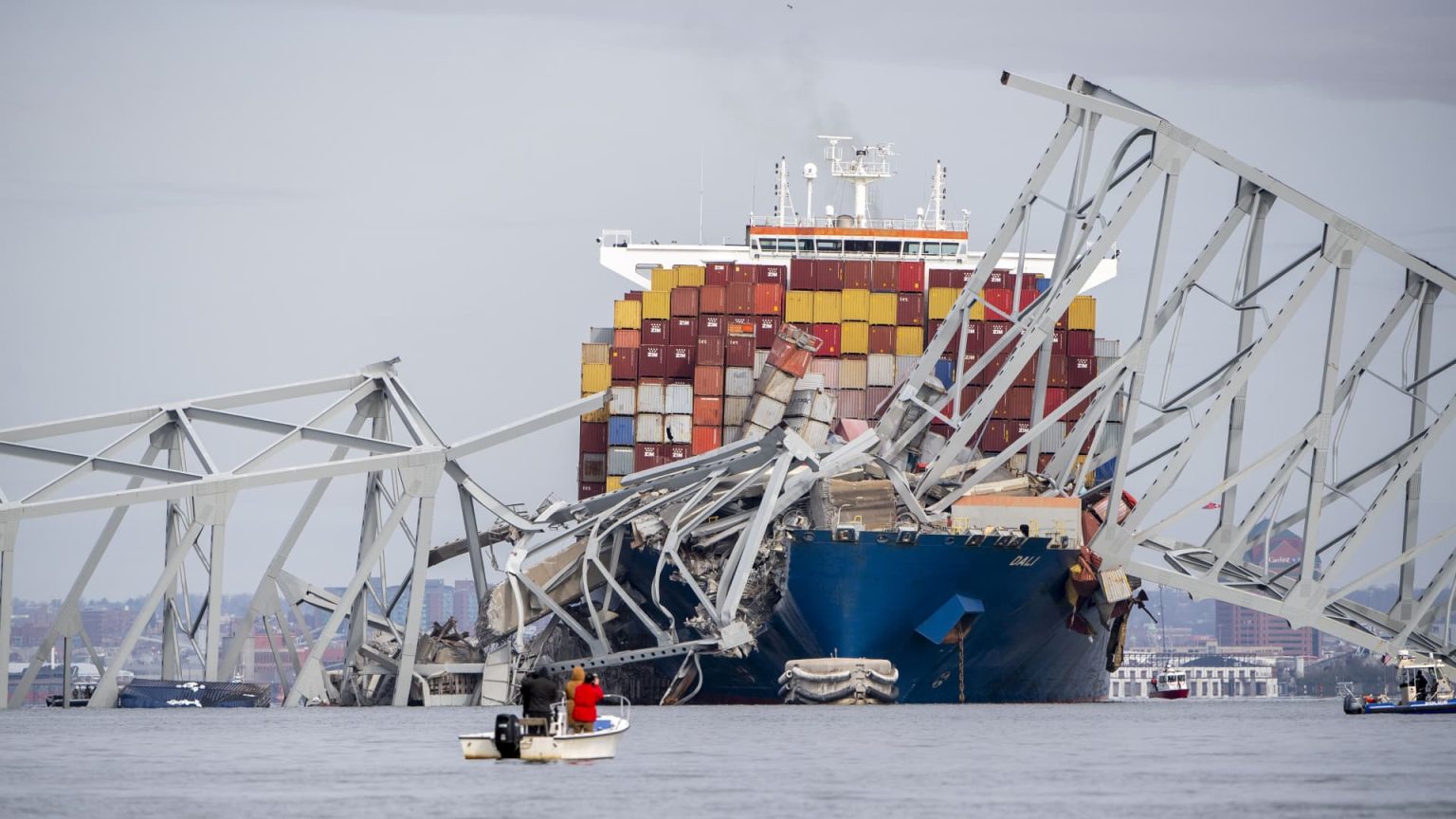Six construction workers were presumed dead after a cargo ship struck the Francis Scott Key Bridge in Baltimore, causing it to partially collapse into the Patapsco River. The incident, which occurred at one of the country’s busiest ports, has raised concerns about supply chain disruptions. The Singapore-flagged container ship involved, known as the Dali, was nearly 1,000 feet long and was heading out of Baltimore Harbor bound for Sri Lanka when it collided with a support pylon of the bridge at 1:30 a.m. ET. Video footage shows the structure collapsing into the river immediately after the impact, and a search and rescue effort was suspended Tuesday evening.
Maryland Governor Wes Moore stated that the crew of the Dali was able to send a critical emergency alert, allowing authorities to clear the bridge of traffic before the collision occurred. The ship’s crew reportedly notified authorities of power issues before the accident, and a preliminary investigation suggests it was an accident. The Dali had been involved in a minor incident in the Port of Antwerp in Belgium in 2016, where it struck a stone wall during unmooring maneuvers. An inspection in San Antonio, Chile in June last year found propulsion and machinery deficiencies, but the ship had passed overseas inspections and carried necessary certificates at the time of the Baltimore incident.
The Maritime and Port Authority of Singapore confirmed that the Dali had passed two foreign port state inspections in June and September the previous year. Despite a faulty monitor gauge for fuel pressure found during the June inspection, it was fixed before the vessel departed the port. The Dali’s next classification and statutory surveys were scheduled for June 2024. Danish shipping company Maersk chartered the ship and expressed horror at the incident, confirming that the vessel was carrying cargo for Maersk customers. They stated that no Maersk crew or personnel were onboard the Dali, and they would continue to monitor the investigations closely.
Baltimore’s port, which handles goods such as automobiles, sugar, coal, and machinery, has seen an increase in traffic since the expansion of the Panama Canal in 2016. The 50-foot shipping channel at the port now accommodates some of the world’s largest cargo ships arriving from Asia and other regions. The incident at the Francis Scott Key Bridge has caused significant disruption at the port, and investigations are ongoing to determine the cause of the collision. CNBC’s Ruxandra Iordache and Jenni Reid contributed to reporting on this story.


